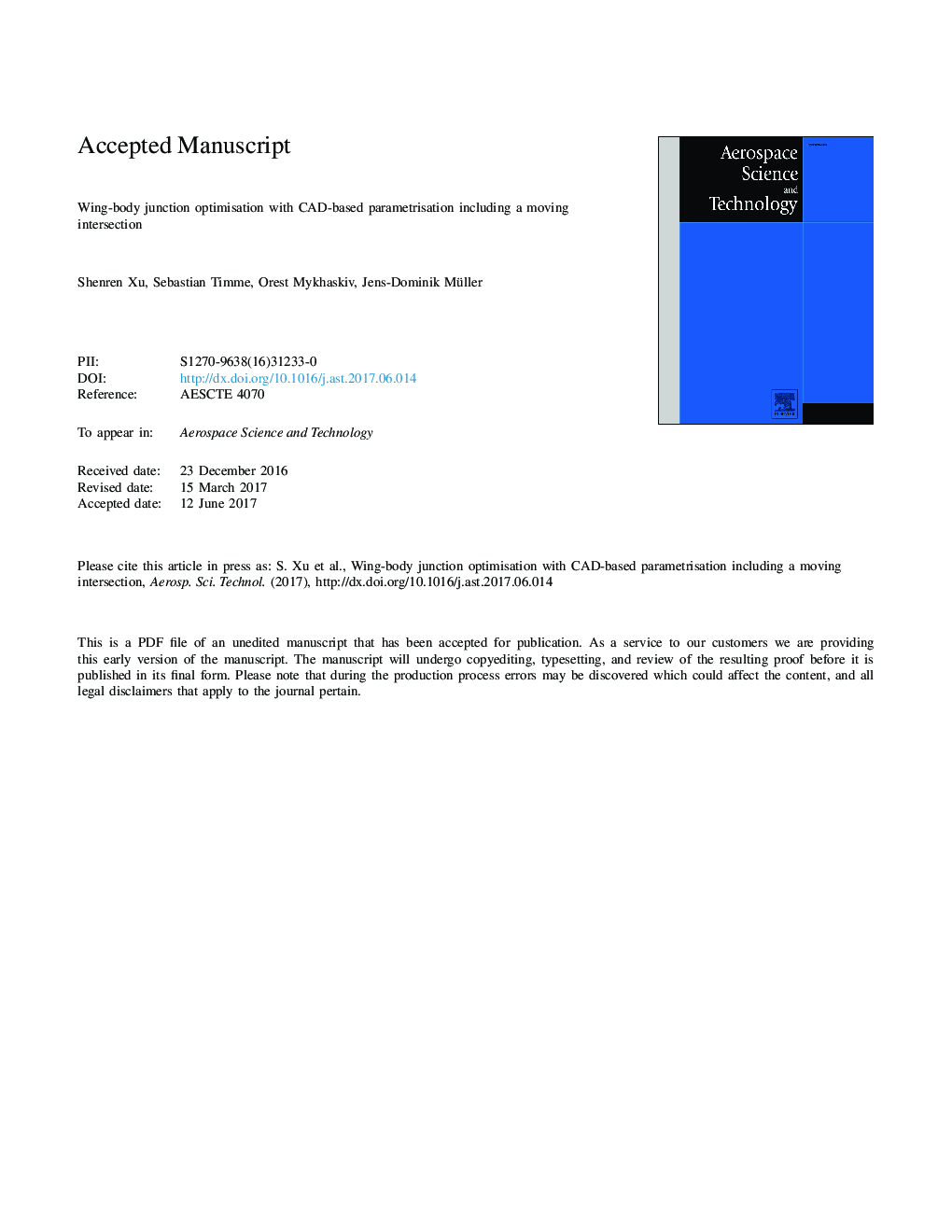| Article ID | Journal | Published Year | Pages | File Type |
|---|---|---|---|---|
| 5472938 | Aerospace Science and Technology | 2017 | 26 Pages |
Abstract
Over the past decades significant progress has been made with adjoint computational fluid dynamics solvers, which are an essential part of efficient high-fidelity aerodynamic shape optimisation. Shape parametrisation is much less mature, in particular the field is lacking efficient and automatic CAD-based parametrisation methods. The paper proposes a novel CAD-based parametrisation with CAD in the design loop such that the CAD shape can ultimately serve as a datum surface in multi-disciplinary optimisation. Wing and fuselage are modelled with B-spline surfaces. The intersection line is calculated using an in-house implementation of a B-spline surface modeller and its derivative is efficiently calculated via finite differences. The proposed parametrisation method is applied to the redesign of the wing-fuselage junction of the DLR-F6 model using an adjoint solver based on Reynolds-averaged Navier-Stokes equations. The moving intersection line capability enables the fuselage surface to be deformed and the resulting intersection line to move along the fixed wing during optimisation. The flow separation in the wing-body junction is substantially suppressed by an improved fuselage shape, at the cost of O(10) steady-state flow and adjoint solutions. The proposed parametrisation method represents an important step towards automated CAD-based optimisation for fully-featured aircraft characterised by complex intersecting surfaces.
Keywords
Related Topics
Physical Sciences and Engineering
Engineering
Aerospace Engineering
Authors
Shenren Xu, Sebastian Timme, Orest Mykhaskiv, Jens-Dominik Müller,
